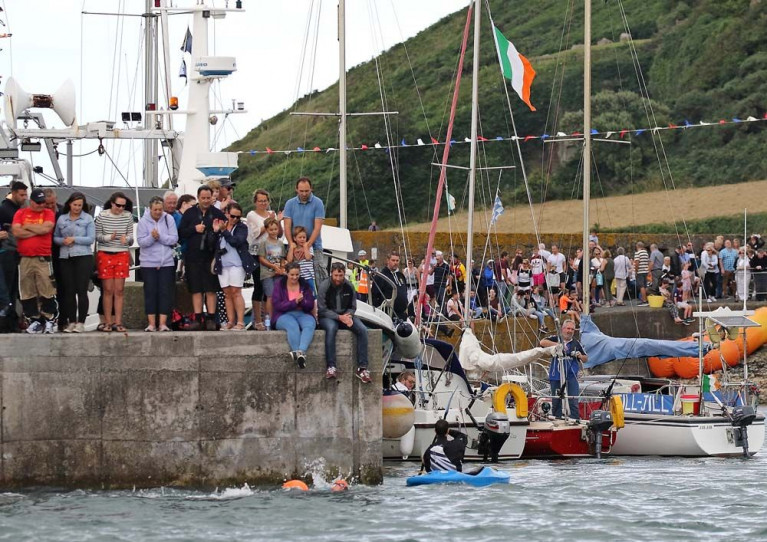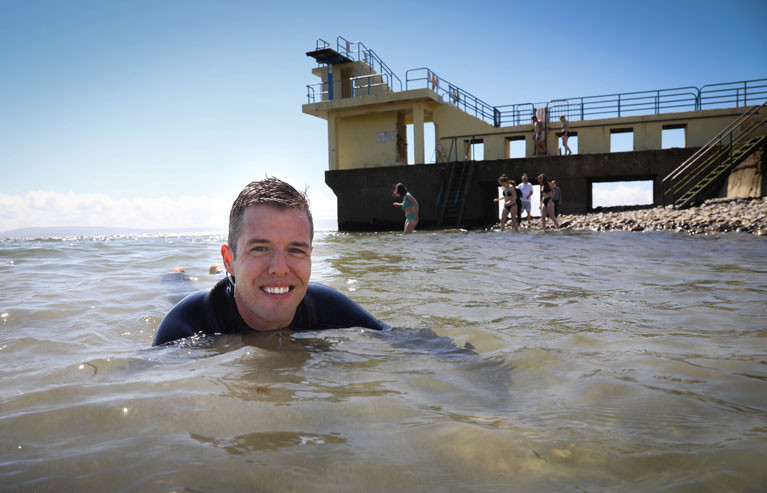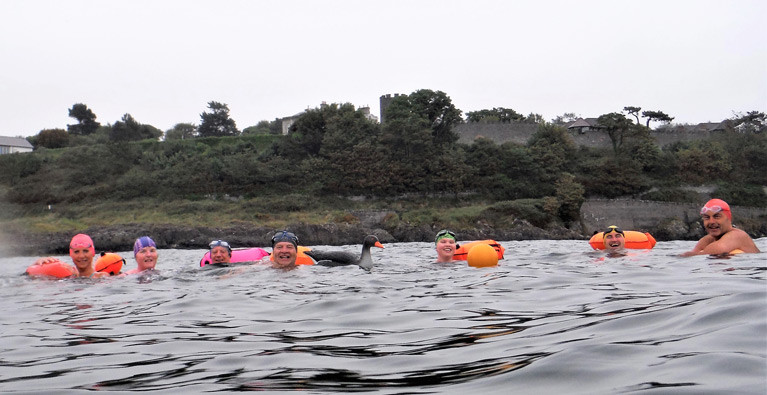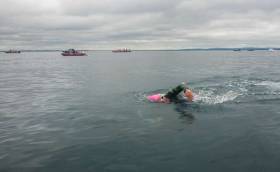Displaying items by tag: Sea swim
RNLI Helvick Swim Cancelled
The 2020 RNLI Helvick Sponsored Swim in County Waterford which was scheduled for Sunday, September 13, has been cancelled due to the revised Covid-19 restrictions.
It would have been the 26th year of the event which was a major fundraiser for the RNLI and social occasion in Waterford.
Swimmers, Paddlers, Surfers Sought for Superbug Research
Swimmers, surfers and paddlers are being asked to participate in research on the risk of superbugs which is being conducted by NUI Galway (NUIG).
The NUIG scientists are examining how superbugs are picked up and how the spread of antibiotic-resistant bacteria can be controlled.
Up to 300 volunteers are being sought – as in a group of 150 sea swimmers, surfers and other regular participants in sea, lake and river activities, and another group of 150 people who rarely take to the water.
The PIER study (Public Health Impact of Exposure to antibiotic Resistance in recreational waters) is being undertaken by the NUIG Antimicrobial Resistance and Microbial Ecology Research Group.
It is funded by the Environmental Protection Agency (EPA) and the researchers hope that the findings will “contribute to improving policy regarding environmental monitoring of antibiotic resistance and the release of waste containing superbugs to recreational waters”.
Sampling of bathing water only needs to take place once a month between May and September under the 2006 EU Bathing Water Directive, but the EPA says some local authorities test more frequently. However, testing for antibiotic superbugs does not take place.
Galway sea swimmers have been seeking more frequent testing and more transparency on results.
Principal PIER project investigator Prof Dearbháile Morris explains that “in healthy people, antibiotic-resistant bacteria behave very similarly to other common bugs and live harmlessly on the skin, in the nose or in the bowel”.
“This is called colonisation. As long as a bug stays on the skin or in the bowel, it usually does not cause a problem,”she says.
“However, once a superbug gets into a wound, into the bladder or into the blood, it can cause an infection that can be difficult to treat,” she says, and this happens to people with weaker immune systems, such as those in intensive care, the very old or the very young.
Special antibiotics are then required for treatment, as ordinary antibiotics do not work, she says.
“Unfortunately, superbugs can transfer easily from healthy colonised people to vulnerable people,” she notes.
“The more people who are colonised with antibiotic-resistant bugs, the higher the risk that these bugs will spread to vulnerable people and cause serious infection,” she says.
PIER’s co-investigator Dr Liam Burke says some superbugs are now very common in the environment, due to increased antibiotic use in humans and animals and the release of sewage, manure and effluent containing antibiotics and antibiotic-resistant superbugs.
“Although bathing waters are routinely tested for some bacteria, they are not tested for antibiotic-resistant bacteria, so we don’t really know to what extent they are present,” Dr Burke says.
“ PIER will look into whether people who regularly use Irish waters for recreation are at risk of becoming colonised with superbugs.”.
Anyone aged 18 or over who lives on the island of Ireland can participate, and more information is here
The Brompton Goose & Sea Swimming on Belfast Lough
Northern Ireland’s coastline is dotted with cold water swimmers who go out no matter what the weather or temperature. The group who swim near Jenny Watts Cave just past Wilson’s Point at Bangor on Belfast Lough are known as the Brompton Belles and Beaux Dippers, taking their name from the nearby road.
Using a decoy Goose as a turning mark was the idea of Nicola Woods who thought it would make a fun swim buoy. Not only is it great fun and a talking point, but from a safety perspective, it is positioned 150m round the reef. Swimmers can use this as a marker and slowly build up to swimming the 300m round the Goose.
Brompton Belles and Beaux Dippers was set up by Marie-Thérèse Davis-Hanson in 2017. Her objective was to establish a group so that anyone who wanted to swim could connect with a swim buddy and not swim alone. Safety of the swimmers is paramount and for this reason, the group offer advice and guidance for anyone thinking of trying open water swimming.
 The Jenny Watts Cave
The Jenny Watts Cave
The rig was put together by Stephen Hanson and Paul Zund and put in position by Nicola, Stephen and Paul on 24th June 2020. (Paul’s other quite different interest is motor boating and he has a Sea Ray in Bangor Marina). The Goose has been causing a stir since then – in a positive way. Nicola says that she has some smaller ducks that she has plans for, so watch this space. Hopefully, the Goose will survive the next big North Westerly.
The group now has over 450 members and regularly participates in activities to raise money for charity, particularly Motor Neurone Disease Association as Marie-Thérèse’s brother has MND.
An interesting feature of the coast where the Brompton group swim is the Jenny Watts Cave. A local legend tells the tale of a local girl of that name who hid in the cave at low tide but was drowned when the tide came in. Her name lives on at the popular pub in High Street.
Safety is the main consideration for the Dippers and each swimmer always goes out at their own risk and is responsible for their own safety at all times. Tow-floats are advisable as the waters are often busy with boats, kayaks, yachts, lobster boats and paddleboarders. A brightly coloured swim hat and is also recommended as are post-swim hot drinks!
As open water sea swimmers prepare for a Galway Bay crossing this weekend, Irish Water has said there is “no proven link” between a recent serious pollution incident in the city and the quality of bathing water off Galway’s beaches writes Lorna Siggins
However, swimmers have called for more regular and longer-term bathing water quality testing, and more transparency in relation to water quality issues.
Six weeks ago, Galway City Council prohibited swimming off beaches at Silver Strand and Salthill and issued a warning about Grattan road beach in Lower Salthill, after elevated levels of bacteria were detected.
The prohibitions were lifted in time for the June bank holiday weekend, and the city council initially ruled out several possibilities, including Mutton Island sewage treatment plant, visiting cruise ships and slurry spreading run-off.
It subsequently stated that the elevated levels of bacteria were due to a fault with the test.
A month later, on July 5th, Galway harbourmaster Capt Brian Sheridan stated in response to media queries that “the current sewage issue is not as a result of port operational activities, including cruise ships that anchor in the bay”.
Galway Bay is a popular destination for cruise ships, which are covered by the international MARPOL regulations. Vessels from another flag state can only discharge treated sewage at least three nautical miles from the nearest land or untreated sewage at least 12 nautical miles from the nearest land.
Capt Sheridan stressed that he issued Galway Port Company’s own prohibition notices, stating that ships must be at least 12 nautical miles west of the Aran islands.
Capt Sam Field Corbett, who owns the old dock known as the “Mud docks” in the inner Galway harbour, said he believed the source of contamination could be linked to a sewage overflow, which he first reported to Galway City Council in March, and to the Environmental Protection Agency (EPA) in early May when there was no action.
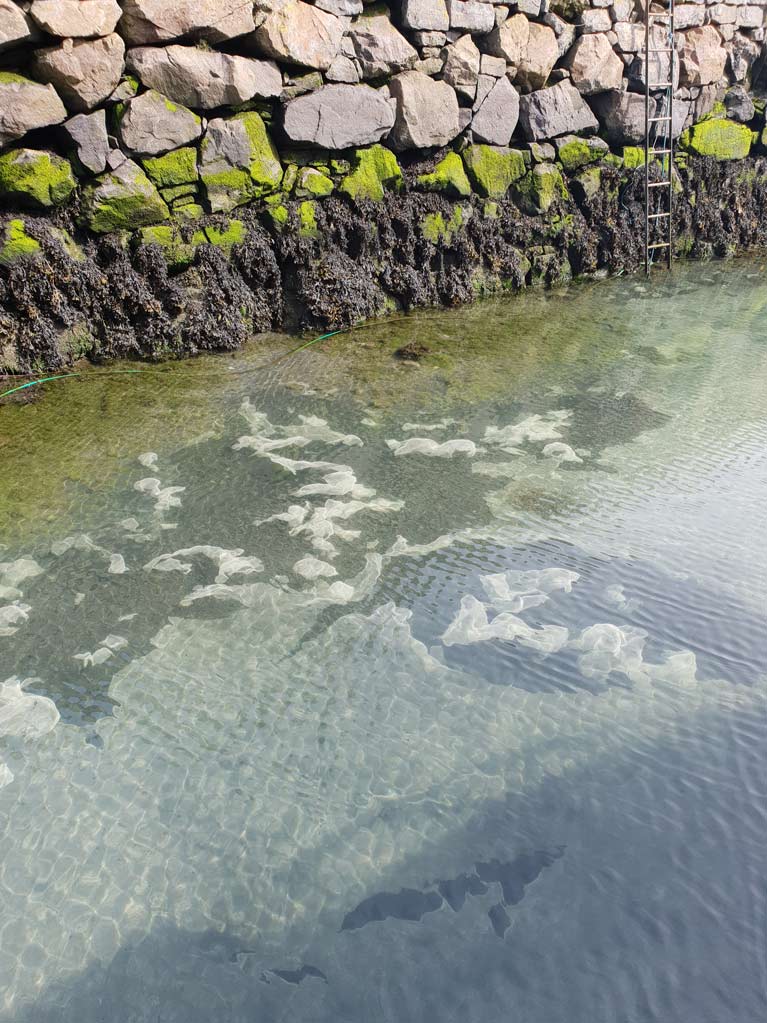 Capt Sam Field Corbett sent this photo to the EPA in May. Corbett says it depicts evidence of sewage and waste at low tide in the Galway city mud dock
Capt Sam Field Corbett sent this photo to the EPA in May. Corbett says it depicts evidence of sewage and waste at low tide in the Galway city mud dock
On May 15th, he informed the EPA that it appeared the sewage had stopped flowing, but evidence of human waste was still present in what he described as “once a thriving eco-system”
On June 14th, Irish Water announced that it was upgrading one of Galway’s Victorian sewer systems, which would address “odour and blockage issues” , as part of a 2 million euro project with Galway County Council due for completion in October.
Irish Water has confirmed that a sewer blockage had caused an overflow at the Mud Docks, and this was “cleared”, and a pipe in Eyre Square repaired.
It said that RPS consultants were separately conducting survey works across the entire Galway city network.
“There is no proven link to the issue at the Mud docks and any issues arising at the bathing waters in Galway city in late May,”Irish Water said, noting that all data reported to date during the 2019 bathing water season in Galway city had been classified as “excellent” or “good”.
Galway sea swimmer Brian Coll, who is undertaking the Frances Thornton Memorial Galway Bay Swim in aid of Cancer Care West this weekend with his family, said he believes there needs to be more frequent water quality testing from April to October.
"The current situation where bathing water quality is tested every two weeks is insufficient, given that Salthill has one of the most active sea swimming communities in Ireland," he said.
"There needs to be weekly water testing and also more active environmental monitoring for visiting cruise ships. This is standard in other cruise ship destinations such as Alaska and Norway, where there are regular checks for any discharges of sewage and wastewater from the ships,” he said.
“We need to have confidence in the quality of our bathing water,” Mr Coll noted.
Sampling of bathing water only needs to take place once a month between May and September under the 2006 EU Bathing Water Directive, but the EPA says some local authorities test more frequently.
The directive is going to be reviewed, and frequency of testing may form part of this, but the review is at its early stages.
Galway City Council's Environment Department said that bathing water quality testing is carried out in accordance with a schedule agreed in advance with the EPA.
"For Blue Flag beaches this is every fortnight and for other beaches this is every week. Once the sample is taken it takes 48 hours for the test to react and as soon as these results are received they are published. Therefore they are published within 48 hours of the test but the test is carried out every two weeks for Salthill and Silverstrand. This is exactly the same frequency any other Blue Flag beach in the country," it said.
Galway City Council says it tests every second week. Results of bathing water quality testing on frequently used beaches around the coastline are posted on the EPA’s website, beaches.ie


























